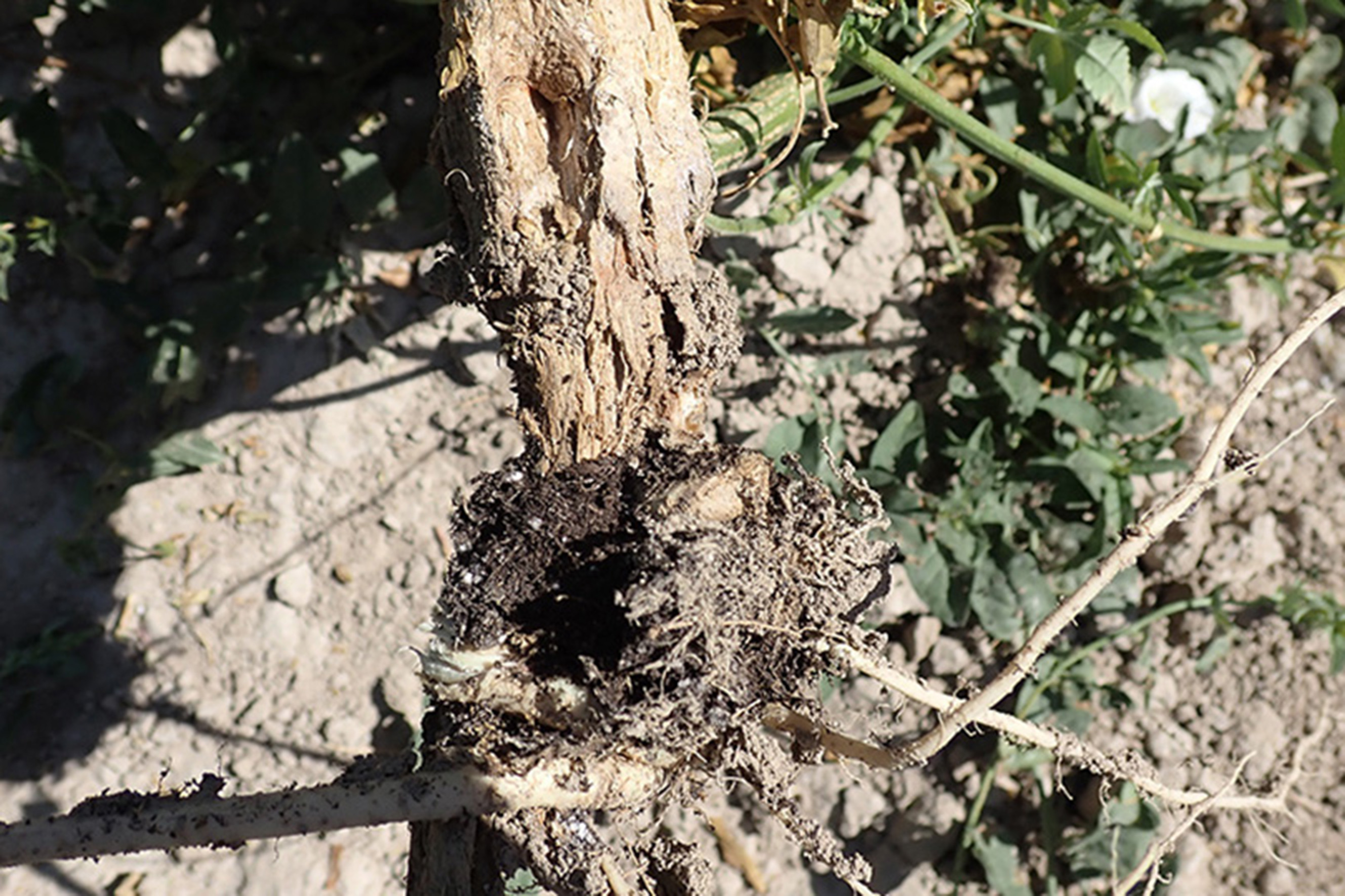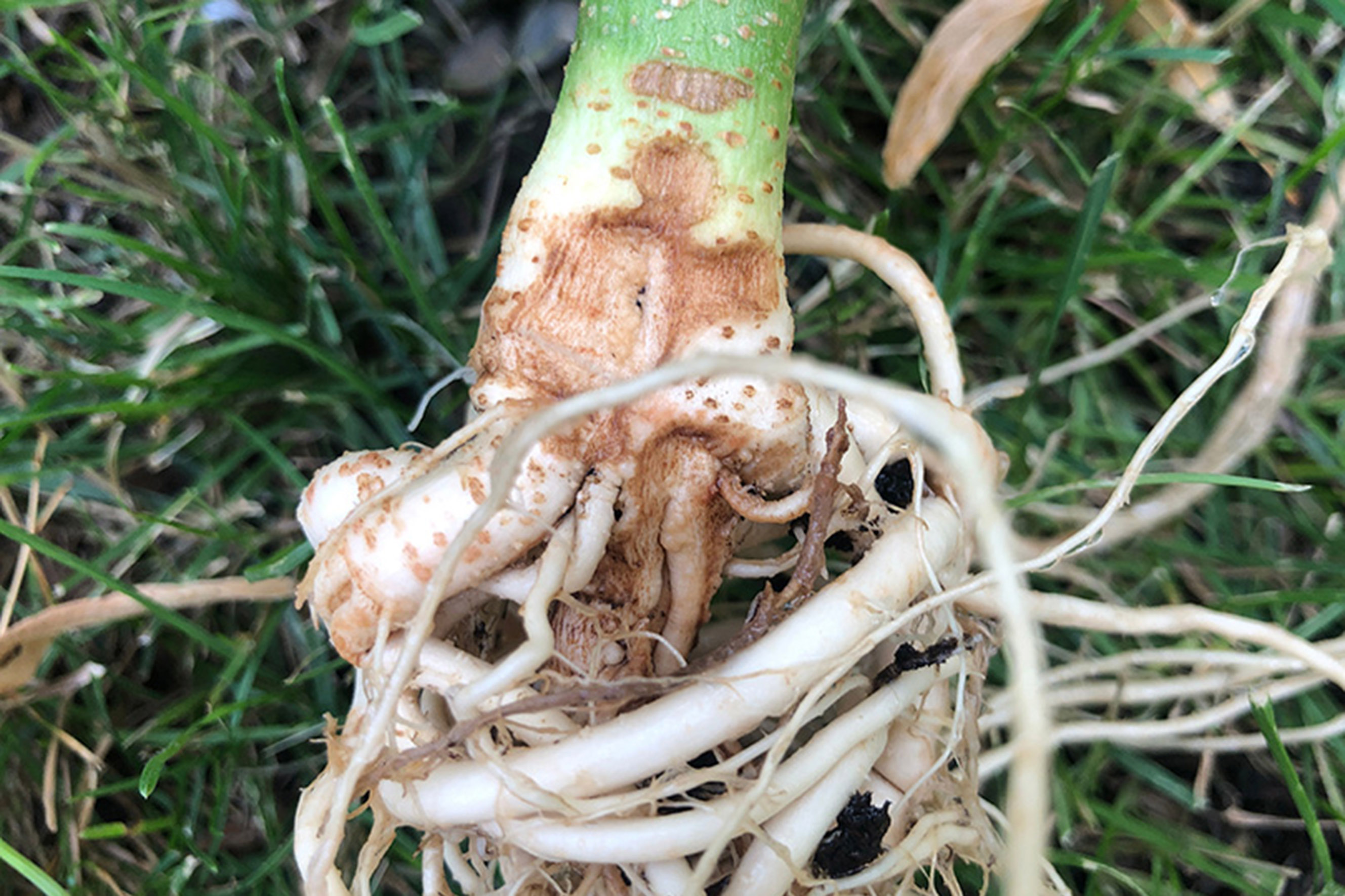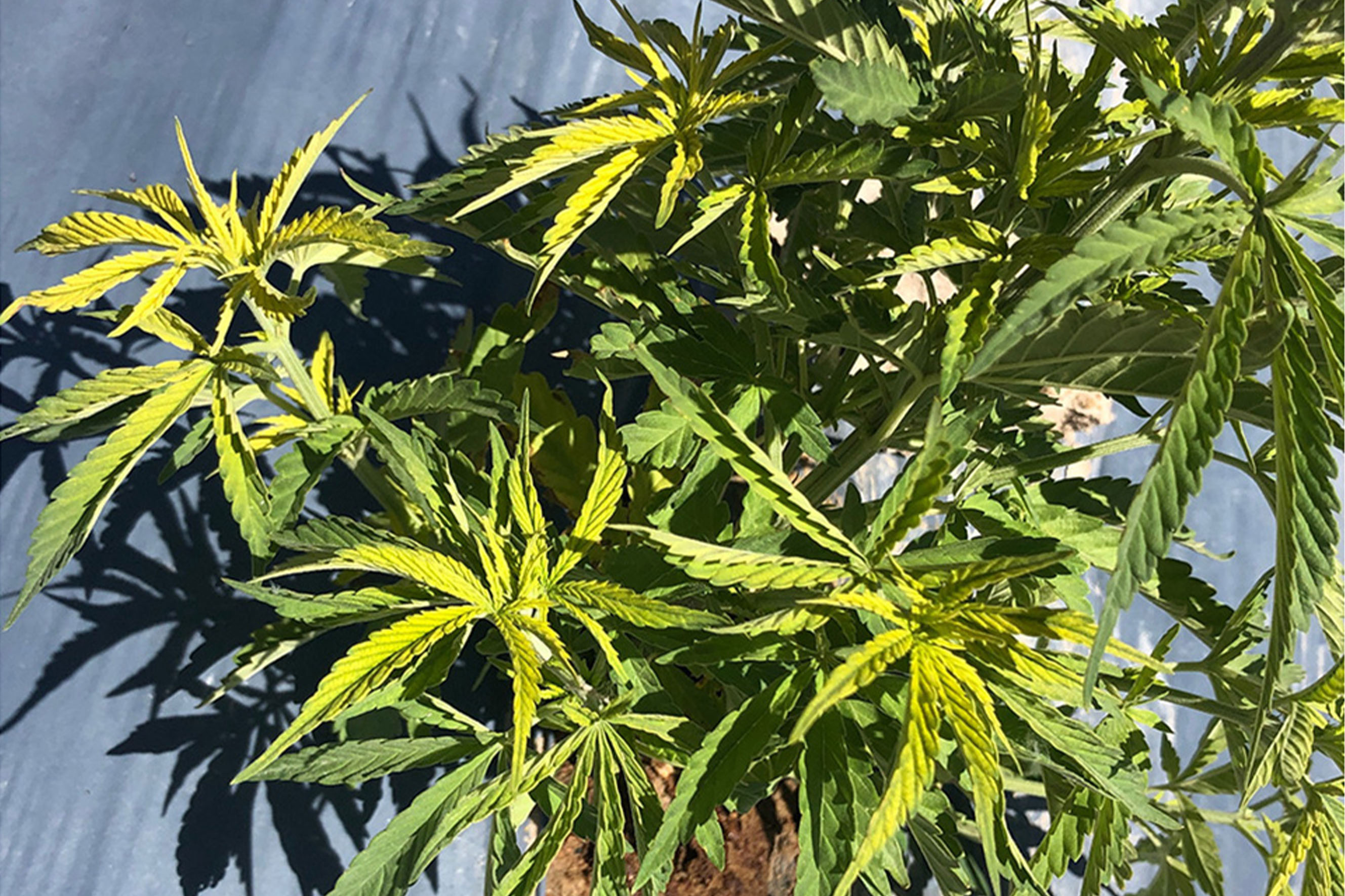Pavement Ants
Tetramorium caespitum
Hosts
 Introduced decay caused by ant feeding at crown of plant.
Introduced decay caused by ant feeding at crown of plant.
 Ant feeding damage at crown of plant.
Ant feeding damage at crown of plant.
- Hemp
- Fruits and seeds
- Fatty and greasy substances
- Dead or live insects
- Dead animals
- Sweets
Description
Worker ants are all the same small size and light to dark brown
with fine grooves lining the head and thorax. Pavement ants have two nodes between the middle and rear body sections. Queen and male winged ants are larger than workers.
Biology
Egg | Larva | Pupa | Adult
- 4 to 5 generations annually.
- Overwinter in nests located below ground.
- Pavement ants are typically active from late winter through late fall.
- Ants fly for mating most commonly in the spring through early summer, especially after rain events.
- Pavement ants are one of the most abundant ant species in Utah, especially in urban areas.
Damage Symptoms
Ants have been known to feed on the base of seedlings and seedling roots, resulting in wilting and plant death. If nests are located directly below the host plant, the result can be reduced plant vigor, poor rooting, wilting, and death.
Time for Concern
When plants are establishing root systems in the field.
When and Where to Scout
Watch for wilting of young plants not caused by lack of water, and inspect soil around base of plant. Watch for winged ants in spring through early summer.
Threat Level
Low. Pavement ants typically do not feed on crops and plants unless there are no other food resources.
Occurrence in Utah
Ants are very common and have been found damaging Utah hemp plants in both field and greenhouse settings.
General Management
- Ensure ants are not present before planting.
- Locate and destroy nests.
- Some insecticide sprays and one bait are approved to protect young plants.
When to Consider Treatment
If populations are present during early growth stages of the plant or if economic damage begins to occur.
Look-alikes
Many other species of ants.
Insecticides
| Utah Registered Product | Active Ingredient(s) | Notes |
|---|---|---|
| Bonide Diatomaceous Earth Crawling Insect Killer |
diatomaceous earth | Greenhouse use only. |
| Bug Buster-O Extinguish Ant Bait | pyrethrins | Greenhouse only |
| Extinguish Professional Ant Bait | s-methoprene | |
| Ferti-lome Fruit Tree Spray | pyrethrins | |
| Pyganic Crop Protection EC 1.4 II; 5.0 II | pyrethrins | |
| Pyrethrum TR Total Release Insecticide | pyrethrins | |
| Tersus Insecticide | pyrethrins |
Photo Credits (from top to bottom)
- Joseph Berger, Bugwood.org
- Joseph Berger, Bugwood.org
- USU Extension IPM Program
- USU Extension IPM Program
- USU Extension IPM Program
- Cody Zesiger





